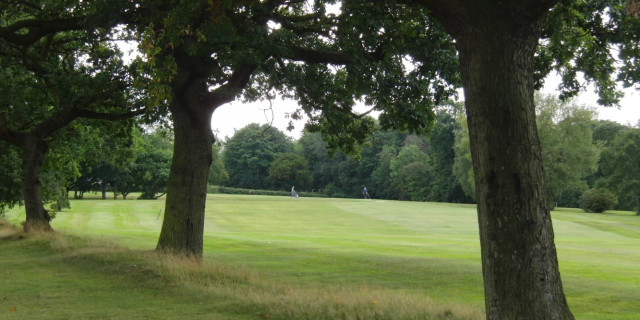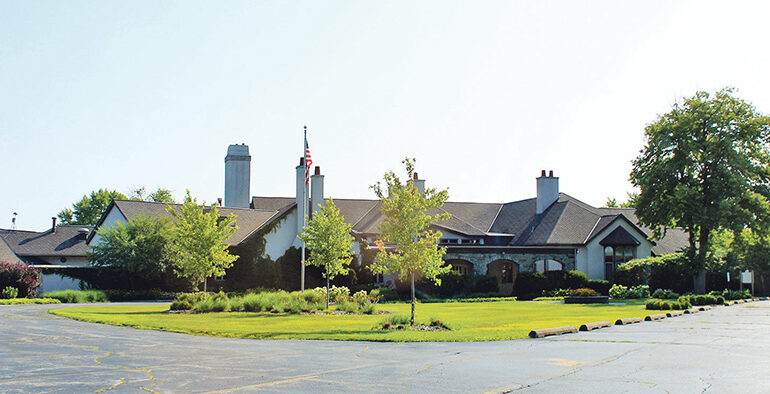Whether it be declining membership numbers, the impact of climate change, coastal erosion, and even repeated vandalism, many golf courses in the UK face a perennial battle to maintain their future and stay open for golfers of future generations to enjoy.
These struggles can expose vulnerabilities that place venues at risk of the gravest threat of all – property development.
Golf courses are laid out across vast swathes of land, often in prime locations, and that makes them viable pieces of real estate and somewhere that developers, both private and government-backed, want to get their hands on.
Property development threatens future of golf courses
We have seen several examples of courses being closed in favour of housebuilding, but the latest as reported by the BBC comes from South Gloucestershire, where plans have been drawn to create 1,750 homes, a new school and a local centre, in addition to a pedestrian bridge across the M4 that will be laid out across land occupied by the two 18-hole courses at Woodlands Golf & Country Club.
The owners of the golf club are supportive of these plans – recognising the local need for housing – with comments stating that the game would still be played here for at least a decade with one course being retained for the foreseeable future.
Matthew Kendrick, from Grassroots Planning, acting on behalf of the golf club, said: “While in the long run the golf courses [would] close, a development of this scale [would] take many years to complete, therefore it is highly likely that golfing [would] continue here for many years.”
Now that the plan has been submitted to the government, public meetings will likely proceed in the spring, but Chris Willmore, South Gloucestershire Council’s cabinet member for planning, regeneration, and infrastructure, did confess that the proposals were not perfect.
“It will mean new development on 2.53% of South Gloucestershire’s existing Green Belt land.
“In keeping with new government directives, however it protects the vast majority and will help to make sure the area remains an attractive place to live and work for years to come,” he said.
Woodlands won’t close imminently, but will become somewhat truncated, and it’s far from the first destination in 2025 to go down this path, some more willingly than others.
These golf courses have been impacted by housebuilding

Positioned on the outskirts of Cardiff, the acclaimed Whitchurch Golf Club took the bold decision to sell off one of its holes, giving up the land to fund redevelopment of its full course.
But far more despairing was the news that Gatley Golf Club, near Manchester, would close after controversial plans to build new homes on the site were given the green light. That came despite 1,600 people signing a petition to protect the land from development.
Elsewhere, Belfast’s Balmoral Golf Club will move out of the city to a new course that will be designed by Paul McGinley, with the Dublin-based Merrion Property Group taking ownership of the current site.
North Oxford Golf Club, which had a history dating back to 1907, was shut down at the end of October after the 70-acre location was selected to be part of a major housing development in the renowned university city.
Additionally, the current course belonging to Maidenhead Golf Club in Berkshire will close at the end of this year, as the land has been sold by the council to Cala Homes, who will build 1,500 houses and flats, with the club itself moving to a new era after buying nearby Mill Ride Golf Club.
Shrivenham Park Golf Club, near Swindon, has also been targeted by developers Bloor Homes.
When there is a growing demand for housing, the acreage occupied by some golf courses makes them an attractive proposition to both developers and local authorities.
Golf clubs face a number of looming threats – but none are more existential than the fierce grasp of property development.
Kieran Clark is the Digital Editor of Golfshake. He oversees editorial content, community engagement, forums, and social media channels. A lifelong golfer from the Isle of Bute in Scotland who has now lived in St Andrews for a decade, he began playing at the age of five and maintains a passion for exploring courses, with a particular affection for historic layouts. Kieran regularly contributes in-depth opinion pieces and features, drawing on his enthusiasm for the game and its culture.






